41 carbohydrates on food labels
Understanding Food Labels - The Nutrition Source Under the Food Allergen Labeling and Consumer Protection Act of 2004, eight major food allergens—milk, fish, tree nuts, peanuts, shellfish, wheat, eggs, and soybeans—are required to be listed in a "contains" statement near the Ingredients list if present in a food. An example would be "contains wheat, milk, and soy." Simple Carbohydrates vs. Complex Carbohydrates - Healthline Aug 19, 2020 · Be sure to include the following complex carbohydrates as a regular part of your diet: 1. Whole grains. Whole grains are good sources of fiber, as well as potassium, magnesium, and selenium.Choose ...
LABEL READING: CARBOHYDRATES AND SUGARS - Renaissance Nutrition Center ... If there were sugar names in the ingredient list, then be very suspicious of what is on the label. The label may list as many as six items: Total Carbohydrate Dietary Fiber Soluble fiber Sugars Sugar alcohols Other Carbohydrates Some manufacturers voluntarily include the subcategories of sugar alcohol and "other carbohydrates." Others do not.

Carbohydrates on food labels
Reading labels | Diabetes UK Key points Always look at the 'total carbohydrate' on the label when carb counting. This will make sure you are counting both the complex (starchy) and simple (sugary) carbs in your food. Both will raise your blood glucose (blood sugar) levels, and need to be matched with insulin. The Functions of Carbohydrates in the Body | Eufic Jan 14, 2020 · Monosaccharides and disaccharides are usually referred to as simple carbohydrates. Long-chain molecules, such as starches and dietary fibres, are known as complex carbohydrates. In reality, though, there are more distinct differences. Table 1 gives an overview of the major types of carbohydrates in our diet. Table 1. Understanding food labels | Diabetes UK Labels on the front don't include the amount of carbs, so check the label on the pack for the total carbohydrate, which includes carbohydrates from starchy food as well as sugars. The figures for sugars on traffic lights are for total sugars, which doesn't tell you how much of the sugar comes from natural sources, such as fructose and how ...
Carbohydrates on food labels. Food Labels | Nutrition.gov Food and Drug Administration (FDA) regulates the safety of food for humans and animals, including foods produced from genetically engineered (GE) plants, sometimes referred to as "genetically modified organisms" (GMOs). Find out more about the safety of GE plants, and how they are regulated here. Food energy - Wikipedia Food energy is chemical energy that animals (including humans) derive from their food to sustain their metabolism, including their muscular activity.. Most animals derive most of their energy from aerobic respiration, namely combining the carbohydrates, fats, and proteins with oxygen from air or dissolved in water. Other smaller components of the diet, such as organic acids, polyols, and ... Food Groups for Carbohydrates, Proteins, Fats, Vitamins Apr 02, 2020 · According to the National Center for Health Research (NCHR), the USDA recently replaced the food pyramid that was introduced years ago. Instead of the pyramid shape — which the NCHR says was criticized for confusing consumers — the new "ChooseMyPlate" recommendation contains five food groups of unequal sections, which include a hearty mix of carbohydrates (fruits and vegetables), proteins ... Reading Food Labels | How Much Fat, Protein, and Carbohydrates Should I ... In this video, our cooking club helps break down food labels in a digestible manner! Here, we discuss the different types of macronutrients, how much of each...
Learning To Read Labels :: Diabetes Education Online Nutrition Facts labels list a breakdown of the total carbohydrate from dietary fiber, sugars and sugar alcohols. This can be confusing. This can be confusing. On Nutrition Facts food labels, the grams of dietary fiber are already included in the total carbohydrate count, but because fiber is a type of carbohydrate that your body can’t digest, the fiber does not increase your blood sugar … Food labels - NHS Nutrition labels are often displayed as a panel or grid on the back or side of packaging. This type of label includes information on energy (kJ/kcal), fat, saturates (saturated fat), carbohydrate, sugars, protein and salt. It may also provide additional information on certain nutrients, such as fibre. How are Carbohydrates & Dietary Fiber Labelled on Foods? The fibers listed below are the most common sources being added to food and can be declared on the Nutrition Facts label as dietary fiber. FDA approved isolated and synthetic non-digestible carbohydrates Gum Acacia Alginate Apple Fiber Bamboo Fiber Carboxymethylcellulose Corn Hull Fiber Cottonseed Fiber Galactooligosaccharides What Is the Difference Between Sugar & Carbs on Food Labels? Each gram of carbohydrate and protein provides 4 calories, while a gram of fat provides 9 calories. Carbohydrates are found in a wide variety of foods, such as grain products, including bread, pasta, breakfast cereals, oatmeal, flours, crackers, starchy vegetables like potatoes and corn, legumes, milk, yogurt, fruits, juices, sugar and desserts.
How to read food labels | healthdirect Sugar: Sugar is a type of carbohydrate. It is better to choose healthier carbohydrates and to limit foods that are high in added sugars. Fibre: High fibre foods such as wholegrain bread and cereals improve digestion and help you to feel full. Sodium: This tells you how much salt the product contains. Eating too much salt is linked to high blood pressure and can lead to heart disease, … Food Labels | CDC - Centers for Disease Control and Prevention If you eat the whole thing, you are eating 8 times the amount of calories, carbs, fat, etc., shown on the label. Total Carbohydrate shows you types of carbs in the food, including sugar and fiber. Choose foods with more fiber, vitamins, and minerals. Choose foods with lower calories, saturated fat, sodium, and added sugars. Avoid trans fat. What Is the Difference Between Sugar & Carbs on Food Labels? With 4 calories in 1 gram of carbohydrates, this amounts to 225 to 325 grams of total carbohydrates on a 2,000-calorie-per-day diet. The Code of Federal Regulations for food and drugs requires that food labels list carbohydrates, in grams, as "Total Carbohydrates" or "Total Carbs," typically appearing above "Protein" in a bold font. Food Labels and Counting Carbs - dummies Total Carbohydrate is listed in grams. Because %Daily Value is written in bold and off to the right side of the label, and lined up neatly with the actual amount, it is easy to allow your eye to zero in on the %Daily Value rather than the actual amount in grams.
How to Read the New Food Label - The Johns Hopkins Patient Guide to ... The percent daily value (%DV) can be used as a quick guide to the food label. Try the 5/20 rule when reading a label. Think about 5% or less as low for any nutrient and 20% or more is high for any nutrient. The %DV is a great way to compare food products if the serving size is the same. Fiber is the nutrient on the label that you want to aim ...
Reading food labels: Tips if you have diabetes - Mayo Clinic Less than 5 grams of carbohydrates a serving Do the math Pay attention to serving sizes. The serving sizes listed on food labels may be different from the serving sizes in your meal plan. If you eat twice the serving size listed on the label, you also double the calories, fat, carbohydrates, protein, sodium and other ingredients.
Food Labeling & Nutrition | FDA Food labeling is required for most prepared foods, such as breads, cereals, canned and frozen foods, snacks, desserts, drinks, etc. Nutrition labeling for raw produce (fruits and vegetables) and...
How to Calculate the Carbohydrates From the Food Label if Fiber ... - Chron It's simple to calculate net carbs from a food label. Look at the total amount of carbohydrates, and then subtract the number of grams of fiber and half the grams of sugar alcohols. Calculating...
Reading Food Labels | ADA - American Diabetes Association The Nutrition Facts labels on foods are really the key to making the best choices. We'll cover the basics so that these labels make shopping easier for you. Get started Understanding Carbs You've heard it all. From carb-free to low-carb, to whole and empty carbs, it's hard to know what it all means. Learn more Food & Blood Sugar
PDF Read the Food Label for Carbohydrates - National Institutes of Health Food labels help you choose foods that are lower in calories and in carbohydrates and sweeteners. Here is a food label for a 12-ounce regular soda. The label provides lots of useful information. 1. Serving Size and Number of Servings The serving size is 12 ounces. There's 1 serving in this container. 2. Amount Per Serving
How To Figure Out The Carbs On Nutrition Labels Trying to interpret the carbohydrates on nutrition facts labels can be downright confusing. There's a number for total carbohydrates but then there are subheadings for dietary fiber, sugars, and sometimes insoluble fiber, sugar alcohols, and other carbohydrates. What Does Everything Mean? Total Carbohydrate, shown in grams, is first.
Sugars on food labels - Sugar Nutrition Resource Centre Sugars on food labels Carbohydrates are broadly classified into monosaccharides, disaccharides and polysaccharides FIND OUT MORE Monosaccharides and disaccharides are otherwise known as 'sugars' FIND OUT MORE Polys or sugar alcohols are naturally found in some fruits and used commercially in products such as chewing gum FIND OUT MORE
How to Use the Nutrition Facts Label — Diet Doctor This chocolate has 14 grams of carbohydrates per serving. 3. Calculate net carbs per serving Third, check the grams of dietary fiber per serving (circled in green, above). Subtract the fiber (green) from the total carbohydrates (blue) to get the net carbs. This chocolate has 9 grams of net carbs per serving (14g carbs - 5g fiber = 9g net carbs).
Added Sugar - The Nutrition Source The average American adult, teenager, and child consumes about 17 teaspoons of added sugar a day, or about 270 calories. [1] While we sometimes add sugar or sweeteners like honey to food or beverages, most added sugar comes from processed and prepared foods.. The leading sources of added sugars in the U.S. diet are sugar-sweetened beverages, desserts, and sweet snacks …
What does total carbohydrates on food labels include? 10 Things to Look for on Food Labels #1 The Number Stickers on Fruits and Vegetables. You might not think of the numbered stickers on fruits and vegetables as being a food label, but you can actually get #2 The Serving Size. #3 Calories. #4 Fat. #6 Fiber. #8 % DV (Daily Value) Another thing to look for on a label is the % DV (Daily Value).
What's the Difference between Carbohydrates & Sugar on Food Labels ... Carbohydrates - 3g. Of which sugars - 2.8g. For this example, you'd count 3g carbohydrates and the sugar amount of that total is 2.8g. Sugar is found in many forms such as sweets, fizzy drinks and desserts. However sugar is also found in other foods like sauces, condiments, bread and other savoury foods. Always check labels on foods that ...
Low Carb Guide to Understanding Nutrition Labels - Virta Health Aim for 5g per day: 3g from food and salting your food to taste and an additional 2g from boullion. 6. Total Carbohydrate. The carbohydrate count is given as total grams, and then broken down into carbs from fiber and sugar. Focus on total carbohydrate. Sugar should be zero as often as possible (1-2g at most).
How to Understand and Use the Nutrition Facts Label | FDA - U.S. Food ... Dietary fiber, vitamin D, calcium, iron ad potassium are nutrients on the label that Americans generally do not get the recommended amount of. They are identified as nutrients to get more of....
What Enzymes Are Used to Break Down Carbohydrates 27.12.2018 · Avoid or consume small quantities of sodas, sweet breakfast cereals, fruit drinks and desserts that contain added sugars in the form of high-fructose corn syrup, corn sweeteners, fructose, brown sugar, molasses, raw sugar, dextrose and malt syrup. The ingredient list on food labels can help you in choosing healthy carbohydrates.
What Is the Relation Between Carbohydrates & Sugar on the Foods Label ... The value for total carbohydrates on a food label includes the amount of all types of carbs -- sugar, starch and fiber -- in one serving. This is the value to use when you're counting carbohydrates, according to the American Diabetes Association. You may need to adjust the amount if your portion is different from the serving size defined at the ...
Reading Food Labels | GI Foundation In Australia and New Zealand and other parts of the world, the term carbohydrate as listed on the nutrition information panel (NIP) only includes the starches and sugars in the food. It does not include fibre because fibre is not broken down during digestion. Therefore "total carbohydrate" includes the starches, sugars and fibre in the food.
Carbohydrates and Blood Sugar - The Nutrition Source When people eat a food containing carbohydrates, the digestive system breaks down the digestible ones into sugar, which enters the blood. As blood sugar levels rise, the pancreas produces insulin, a hormone that prompts cells to absorb blood sugar for energy or storage. As cells absorb blood sugar, levels in the bloodstream begin to fall. When this happens, the …
Food Labels: Carbohydrates | Home & Garden Information Center According to nutrition experts, carbohydrates should provide 45-65% of your total daily calories. That means carbohydrates should supply 900 calories or more in a 2,000-calorie-a-day diet. Facts on Food Labels Food labels contain clues to a food's carbohydrate content, including the amount per serving.
Reading Food Labels for Carbohydrates - dummies To find the amount of carbohydrates in your foods, follow these steps: Look for the line that reads "Total Carbohydrate" on the label. The value on this line will tell you how many grams of carbohydrates are in one serving of the food. Check the number of servings per container to see if your package has one or more servings.
Understanding food labels | Diabetes UK Labels on the front don't include the amount of carbs, so check the label on the pack for the total carbohydrate, which includes carbohydrates from starchy food as well as sugars. The figures for sugars on traffic lights are for total sugars, which doesn't tell you how much of the sugar comes from natural sources, such as fructose and how ...
The Functions of Carbohydrates in the Body | Eufic Jan 14, 2020 · Monosaccharides and disaccharides are usually referred to as simple carbohydrates. Long-chain molecules, such as starches and dietary fibres, are known as complex carbohydrates. In reality, though, there are more distinct differences. Table 1 gives an overview of the major types of carbohydrates in our diet. Table 1.
Reading labels | Diabetes UK Key points Always look at the 'total carbohydrate' on the label when carb counting. This will make sure you are counting both the complex (starchy) and simple (sugary) carbs in your food. Both will raise your blood glucose (blood sugar) levels, and need to be matched with insulin.
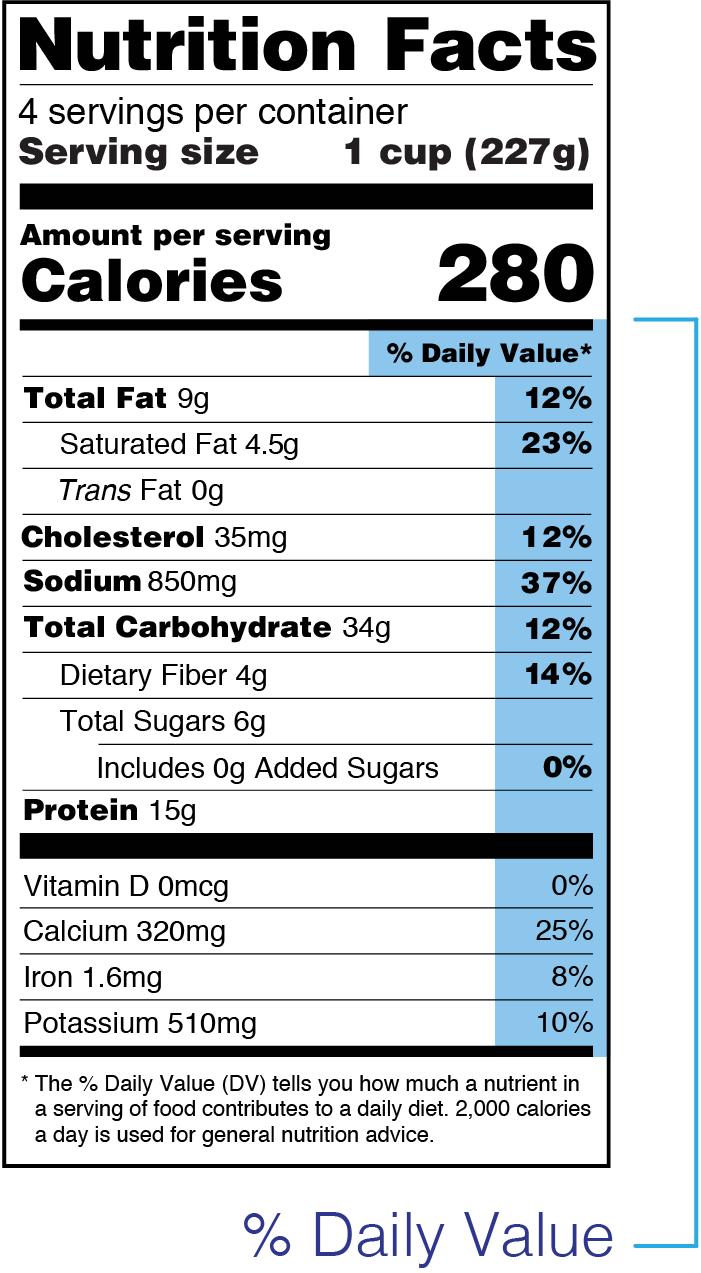
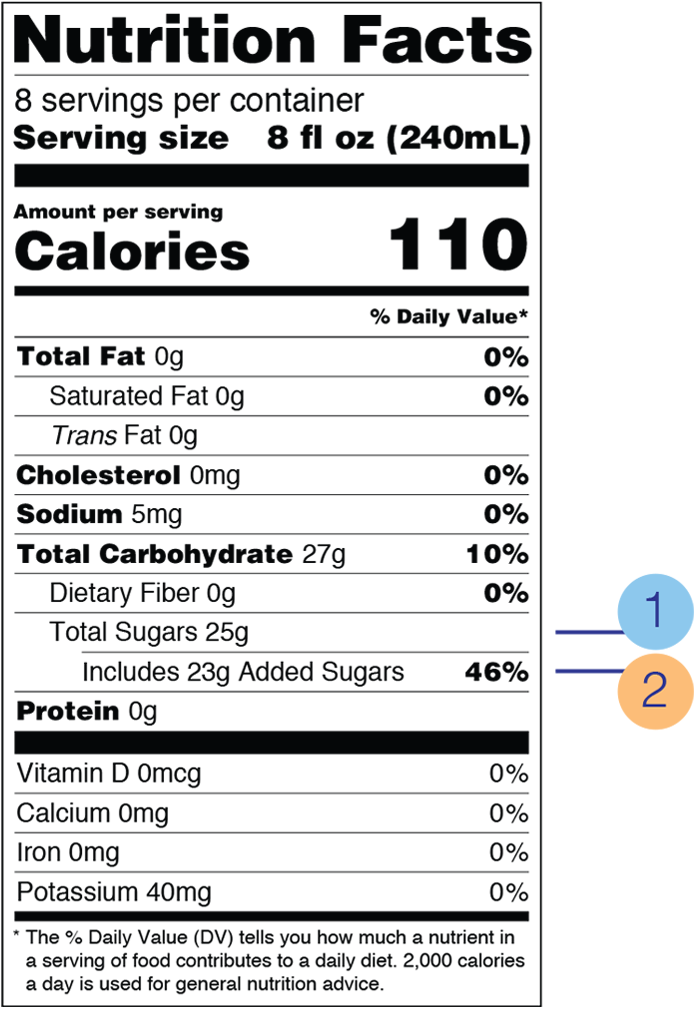


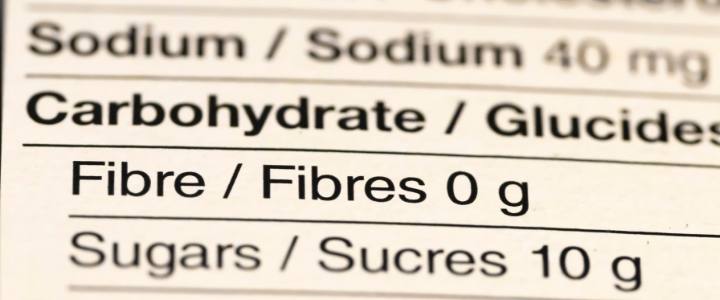
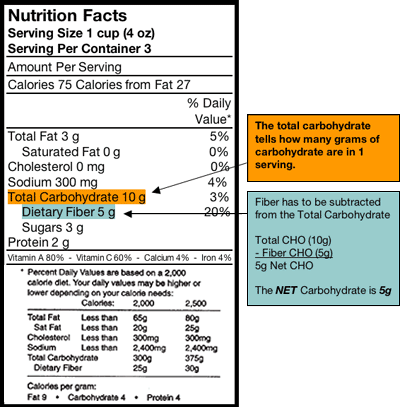
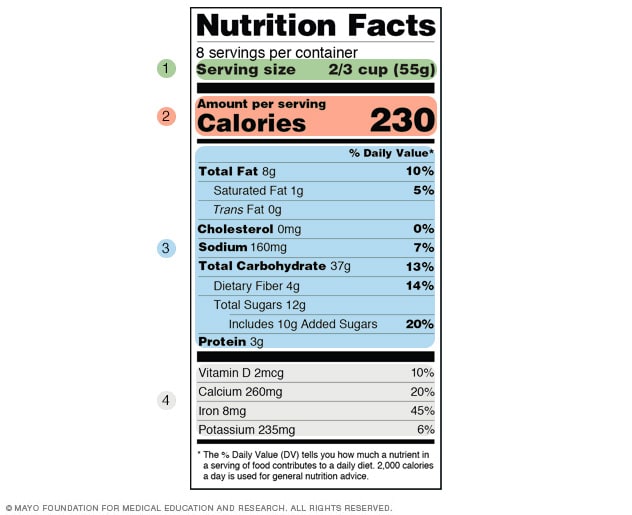







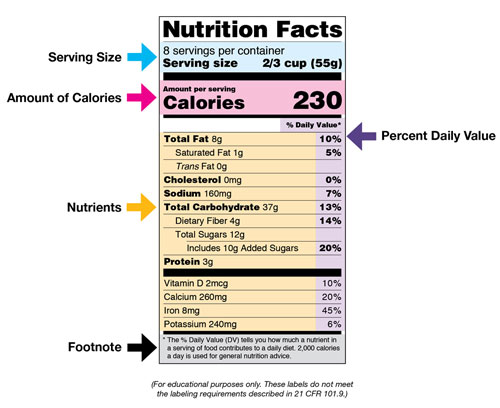


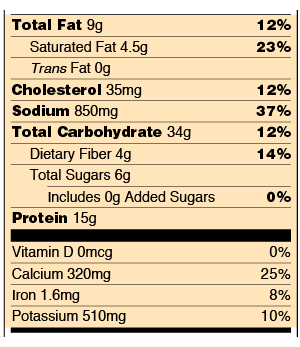


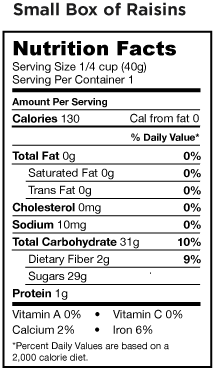


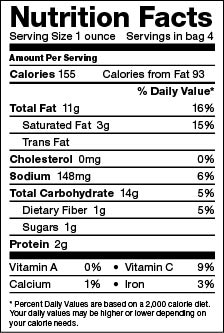



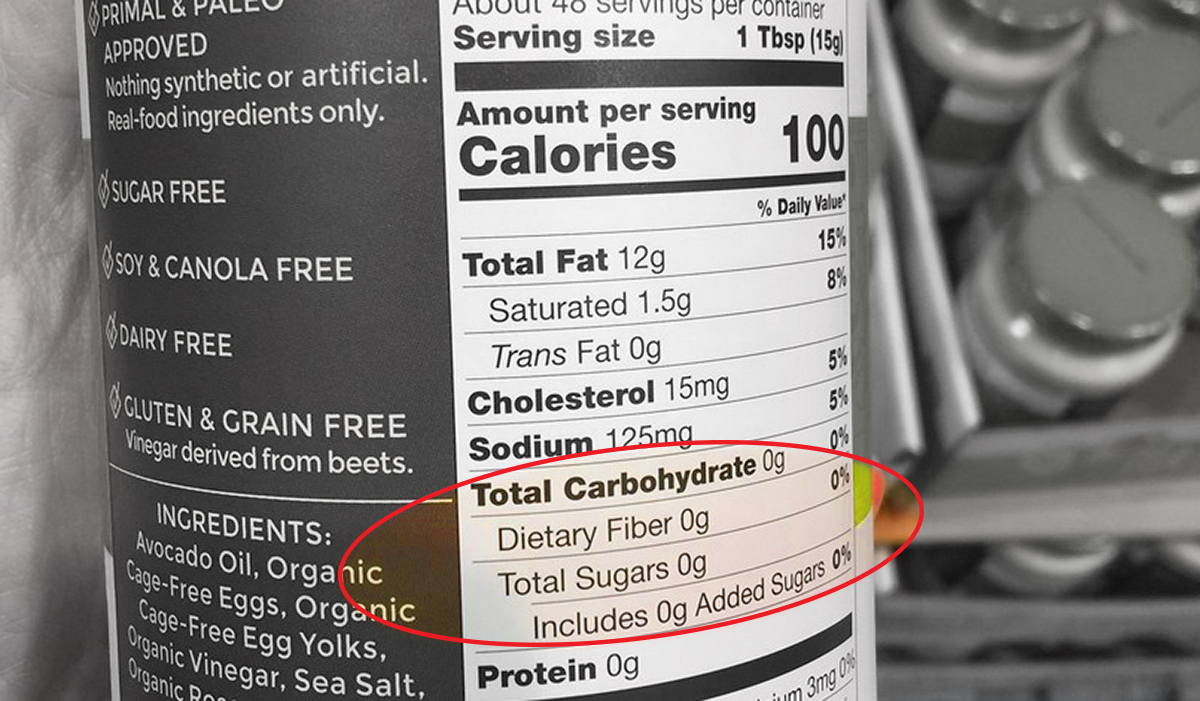


:max_bytes(150000):strip_icc()/carb-counting-and-diabetes-5209223_FINAL-9796df35fa38420baec37a37c3c8347e.jpg)
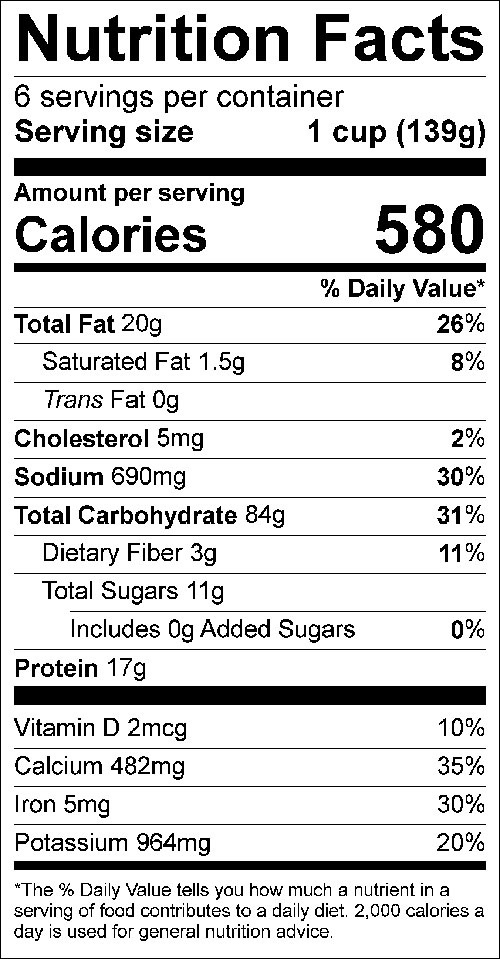
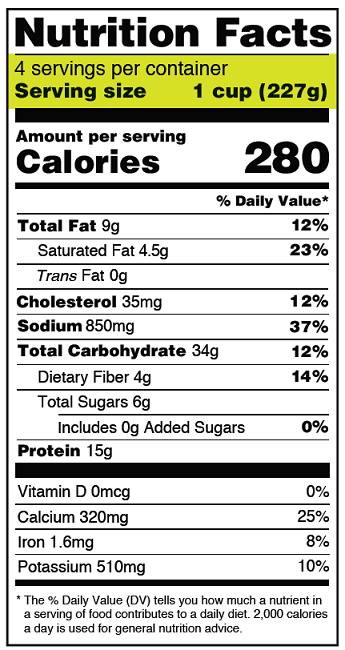
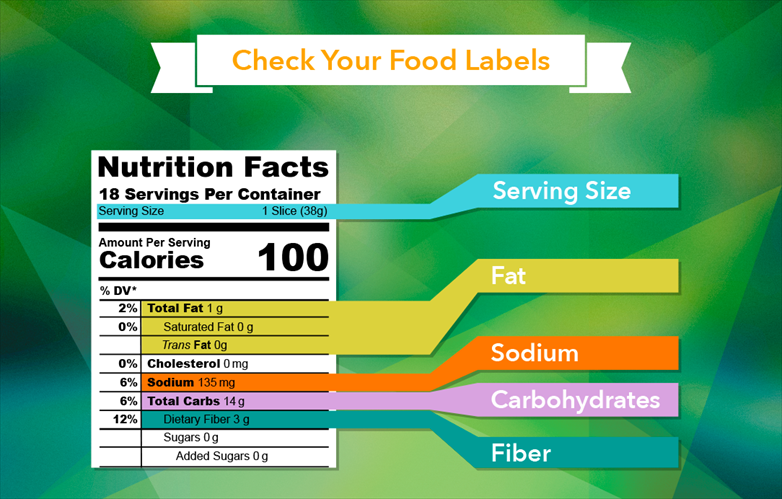



Post a Comment for "41 carbohydrates on food labels"